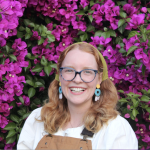Our plane glides through the Endicott Mountains of the Brooks Range as we make our final descent into Anaqtuuvak (‘the place of caribou droppings’ in Iñupiaq). Accessible only by plane, Anaktuvuk Pass is located 250 miles northwest of Fairbanks and is home to the only community of inland Iñupiat, Nunamiut, people [1]. Below, icy blue glaciers feed into a winding network of streams that snake through dense, green tundra and low-lying willows that line the banks of the Anaktuvuk River. From the air, the tundra seems to be a verdant forest, but once on the ground the trees and shrubbery are no taller than 5-6 feet. The village stands out like a colorful flower within the greenery, blooming into view as we enter the valley. In Anaktuvuk, the roots of plants and people alike extend down into permafrost, the lifeblood of the ecosystem and holder of history.
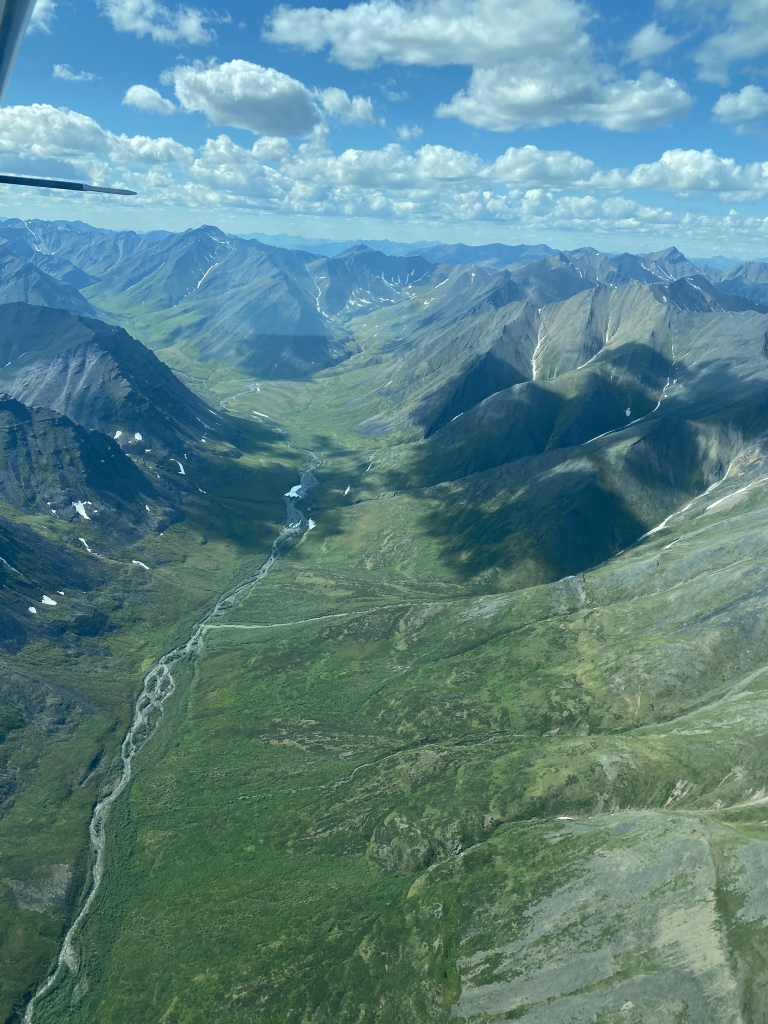
Mike and Yoko are both professors and researchers at the University of Alaska at Fairbanks’ Troth Yeddha’ Center for Cross-Cultural Studies Program, College of Indigenous Studies. Mike has worked in Alaska and with Indigenous communities for nearly three decades and Yoko for almost 15 years. Their personalities are distinct – Mike is soft-spoken, thoughtful, and tends to hang on the periphery, deferring to both Yoko and community partners. Yoko is energetic and lights up a room the moment she enters. Their difference in temperament combined with their shared commitment to and skill for developing trusting relationships with their community partners makes them a formidable team.
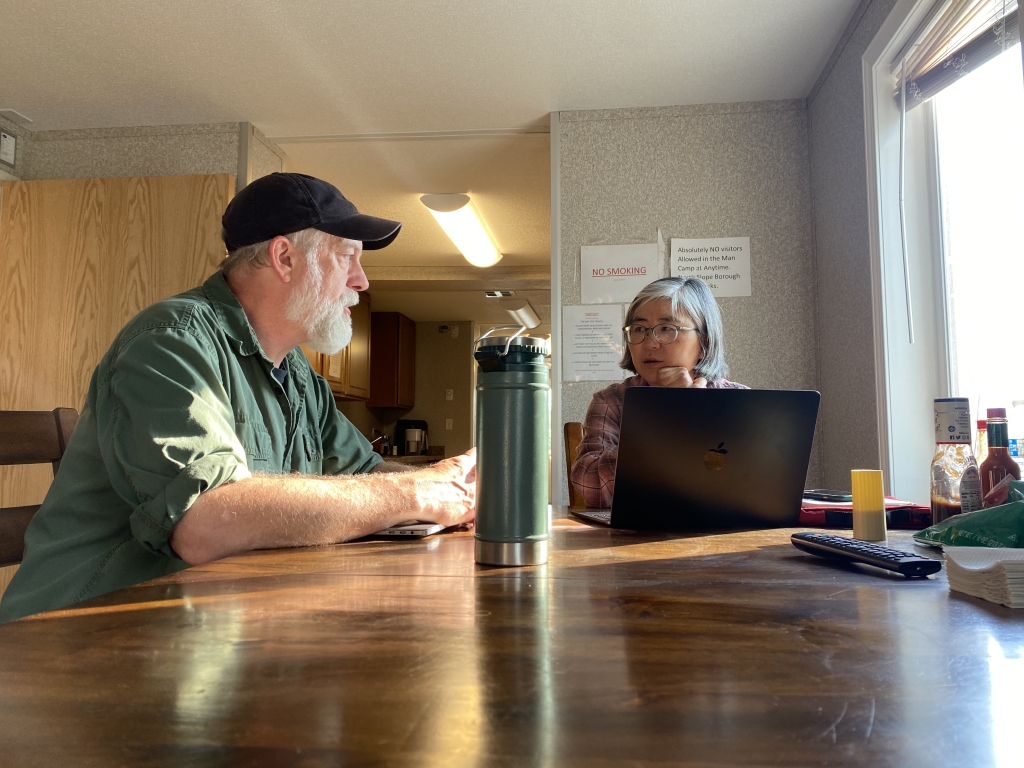
For the last three years, they have visited Anaktuvuk Pass annually as part of their project, “Changes in Underground Food Storage Traditions: Exploring Food Life-History and Food Security in Beringian Communities.” The nature of their research spans below and above ground, examining storage practices and the impacts of external environment and climate conditions, as well as food traditions – sociocultural and spiritual practices surrounding food. The connection of natural and social sciences in relation to food is known as Food Life History. Mike and Yoko’s research extends across a variety of communities, each with distinct practices, often predicated on their physical environment [2].
Anaktuvuk Pass was settled in the 1940s by four families (approximately 31 people) who were previously nomadic and arrived in the valley through various mountain passes. Here, the primary traditional meat source is caribou, which migrate through the valley in fall and spring. The subsistence hunting of caribou is supplemented by sheep, and the occasional bear and moose. The names of the original families not only adorn street signs, but are also well represented among the current residents, the majority of whom are descendants [1]. Prior to settlement, nomadic Nunamiut people used a modified, shallower underground cache to store caribou meat. After settling in Anaktuvuk Pass, residents constructed three ice cellars hiġłuat (pl.) near the banks of Lake Eleanor in 1949 [4]. Each hiġłuaq (sing.) featured a chimney-like entrance with a ladder which descends approximately 8 feet before arriving in a circular underground room carved into the permafrost. Many of the Anaktuvuk Pass Elders were born in the early days of settlement and remember the construction, use and maintenance of the hiġłuaq [2].
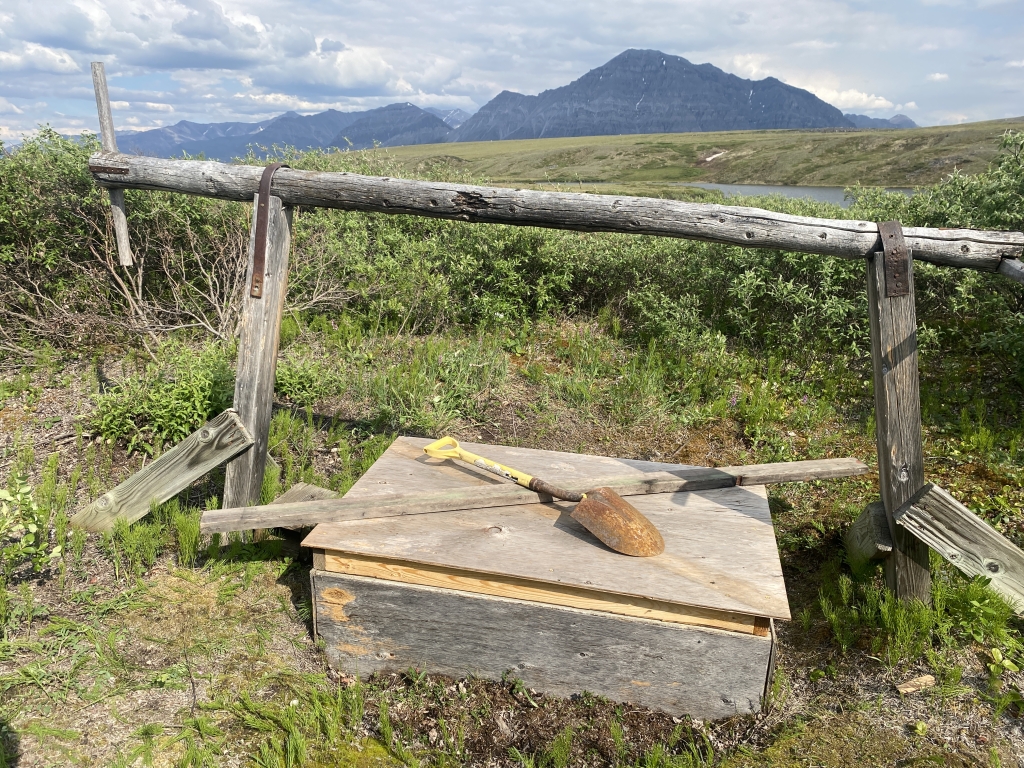
During past visits Mike and Yoko conducted interviews with Elders and knowledge-bearers to learn how underground food storage was practiced in Anaktuvuk Pass and to record knowledge of traditional food practices. In these interviews, Elders reflect fondly on the years when dog teams were used to travel toward various coastal communities to trade caribou for seal oil and meat, and whale meat. Today, both people and goods arrive in Anaktuvuk Pass by plane. Seal oil and other delicacies from the coast are rare. With the arrival of electricity and freezers, the traditional food practices in Anaktuvuk Pass shifted further, and hiġłuat fell into disuse in the late 1970s and early 1980s [2].
This year, Mike and Yoko hope to speak with a variety of stakeholders, including Elders, community leaders of Nagsragmiut (federally recognized Alaska Native village council), Nunamiut Corporation (Alaska Native village corporation), and the City of Anaktuvuk Pass to share the preliminary results of their research and to determine how their research may be useful to the community going forward. Both Mike and Yoko have expressed hopes that some practical good can come from their research, but that ultimately, it will be the decision of the community leaders.
Today, as we walk out to the cellars, the sun beats down, the horseflies buzz, and the tundra squelches beneath our boots. Around the village, it’s perhaps the most common conversation starter. “Ah, it’s been so warm.” That’s no exaggeration. It is hot in the Arctic, often in the 70s when we were there, and unfortunately these observations reflect a larger trend. Anaktuvuk Pass is getting warmer and the precious permafrost, a keystone to traditional food practices and sovereignty, is thawing at an alarming rate [3]. Over their past two years of research, Mike and Yoko have examined three hiġłuaq along the banks of Lake Eleanor, two of which are collapsed and one of which was flooded. In 2023, Mike, Yoko and community research assistants in Anaktuvuk Pass pumped the water out of the flooded hiġỊuaq, fitted it with a new cover and placed sensors in it to measure temperature and determine the annual flooding sequence. Through these activities they hoped to determine whether it would be possible to refurbish the existing ice cellar.
When we arrive at this hiġỊuaq, there is an air of anticipation. I find myself hoping that somehow the new cover has prevented flooding and that we’ll find a pristine cellar ready for use. It’s not the case. Mike and our local assistant lift the lid to reveal roughly two feet of water sitting atop solid ice. This ice likely extends roughly 10 feet down to the bottom of the hiġłuaq, and is the result of thawing permafrost, which fills the cellar with water in warm months and then re-freezes during winter. After taking measurements, they find the ice has actually been lifted two feet closer to the surface during the past year’s thawing and refreezing. Later that evening, the sensor data reveals a similarly grim reality: the hiġłuaq never reached the required sub-freezing temperatures needed to function as a food storage cellar. The confirmation that all existing hiġłuat are unusable catalyzes the next step in Mike and Yoko’s research: determining if community leaders and members are interested in constructing a new [community] hiġłuaq.
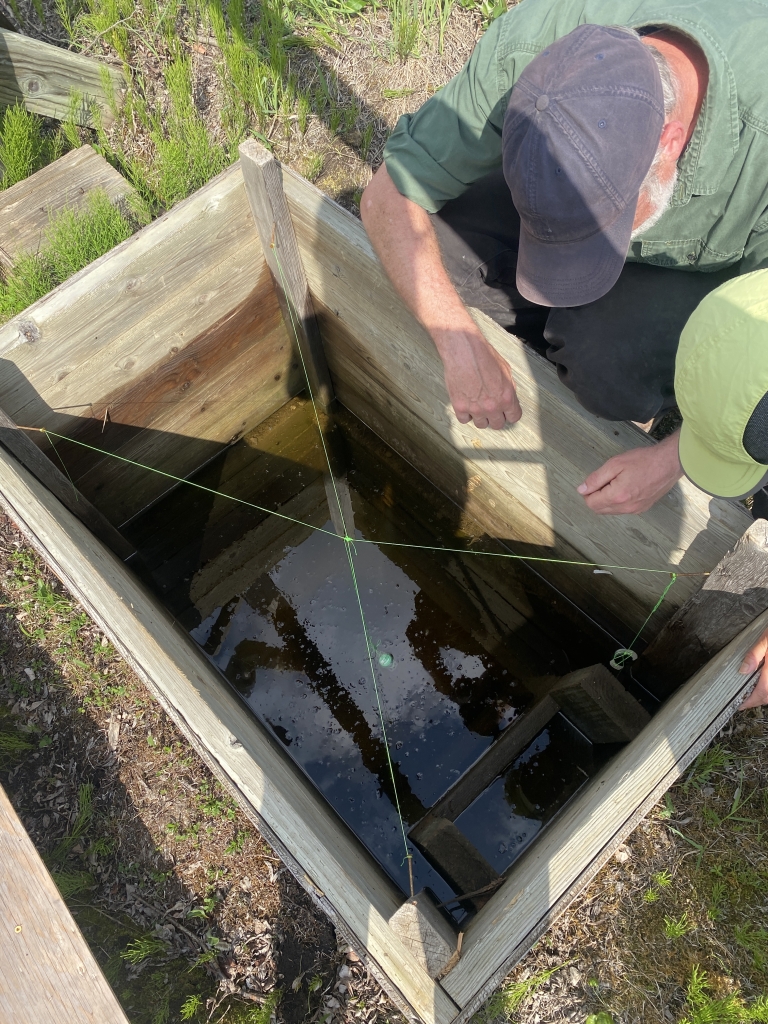
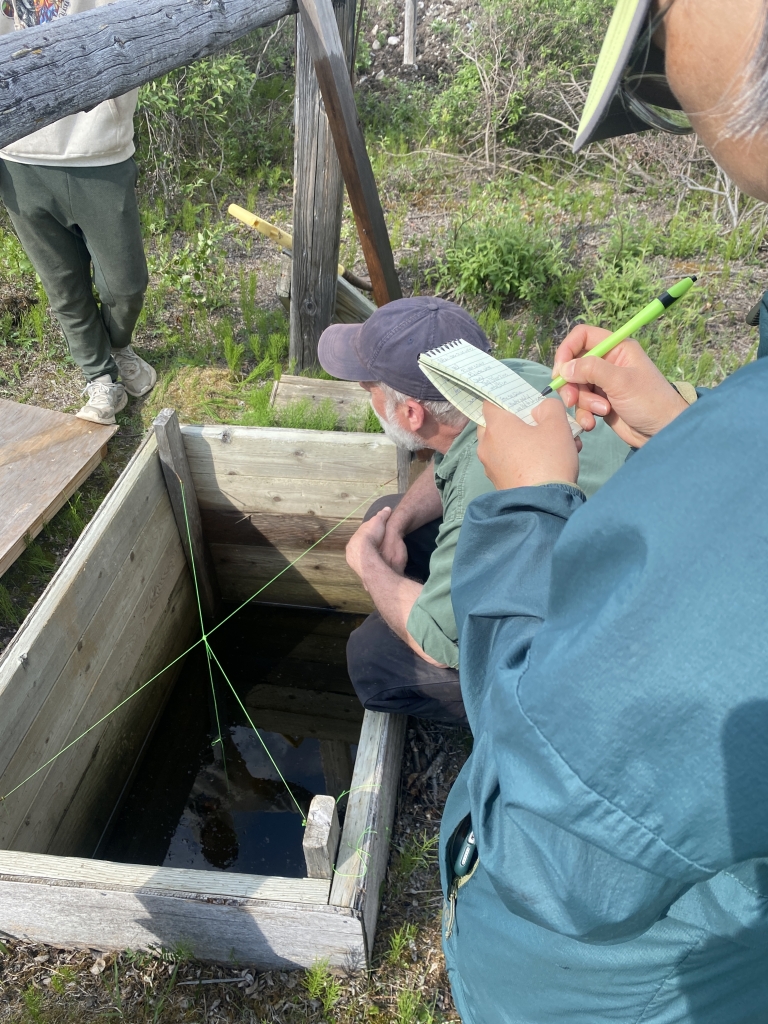
Over the next week, our days are filled with walks around the village and on the tundra, meetings with community members, leaders, Elders, knowledge-bearers, tribal leaders and city and corporation representatives. In a matter of five days, years of relationship-building pays dividends. Nearly everyone is interested in a new hiġłuaq, and many suggested it could serve a dual purpose as traditional storage for caribou meat, as well as an educational space to connect young generations to food lifeways in their community. The primary barrier seems to be finding a location that is not too rocky, still has permafrost, and is in close proximity to the community of Anaktuvuk Pass. Community leaders express interest in the potential for Mike and Yoko’s colleague, Go Iwahana (permafrost scientist, UAF), to conduct satellite imaging of the remaining permafrost in Anaktuvuk Pass. This imaging, combined with the traditional knowledge of community leaders will help determine an ideal location for a new cellar. Throughout these meetings and community events, one thing is abundantly clear: none of these conversations would have been remotely possible without Mike and Yoko’s commitment to community-based participatory research (CBPR) which has established a foundation of trust with community members in Anaktuvuk Pass.
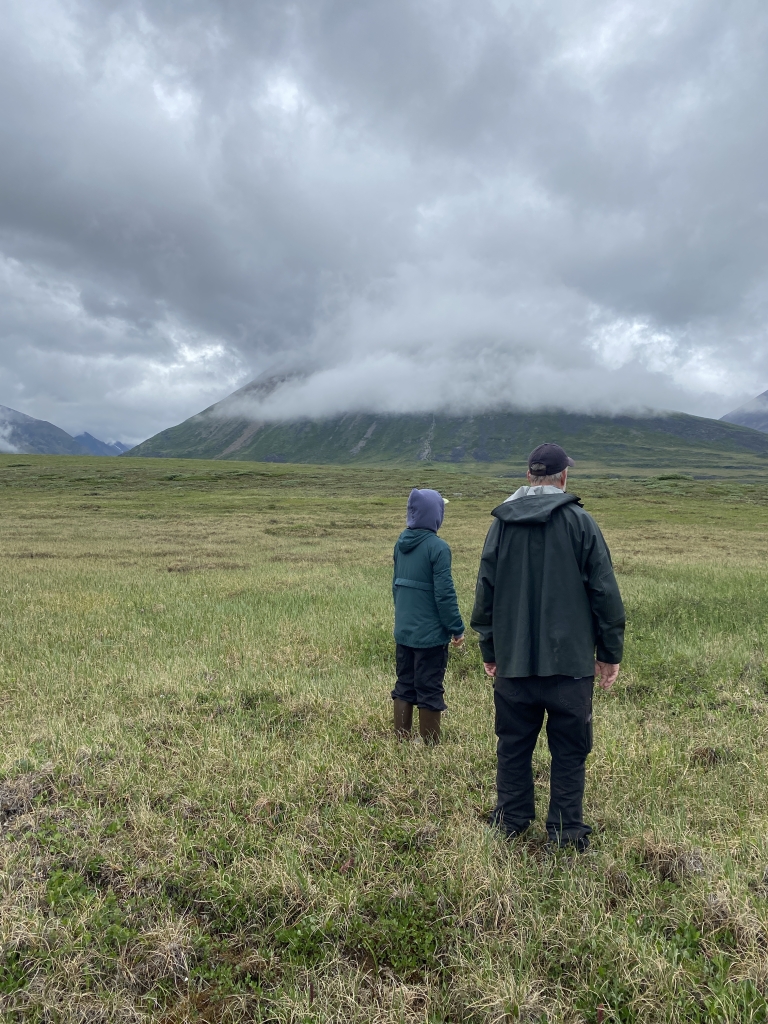
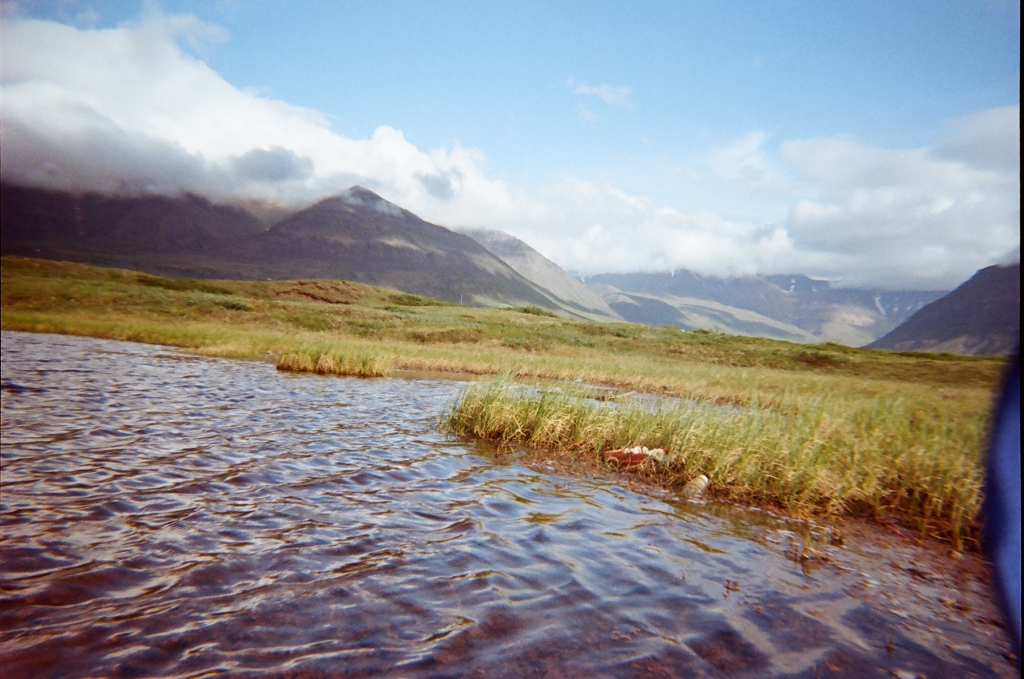
I came to Anaktuvuk Pass sure I would learn about what was below ground – ice cellars, permafrost and an ecosystem vastly different from my own home in Los Angeles. I also hoped I would have the opportunity to learn about and from the people of Anaktuvuuk Pass. Human elements of research are challenging to anticipate and impossible to quantify. There are not key performance indicators that can measure trust and partnership, and yet these are cornerstones to any co-production between researchers and the communities they partner with. During my time in Anaktuvuk Pass, I was welcomed into meetings, interviews, people’s homes and work spaces. I had the opportunity to lead a gardening workshop where students of all ages explored planting micro-greens, flowers, herbs and met some wiggly worm friends. In addition to sharing garden activities with community members, I had the privilege of meeting a local author, illustrator and farmer who cultivates a variety of foods in a high tunnel and founded the Gardens in the Arctic project [5]. Across all of our activities, community members in Anaktuvuk Pass shared their traditional and sacred knowledge and showed us the beautiful land surrounding the village, spaces the Nunamiut steward and which in return provide them resources to sustain life. I feel so grateful for this opportunity, for the care Mike and Yoko have taken in cultivating relationships and for the community in Anaktuvuk Pass who welcomed us.
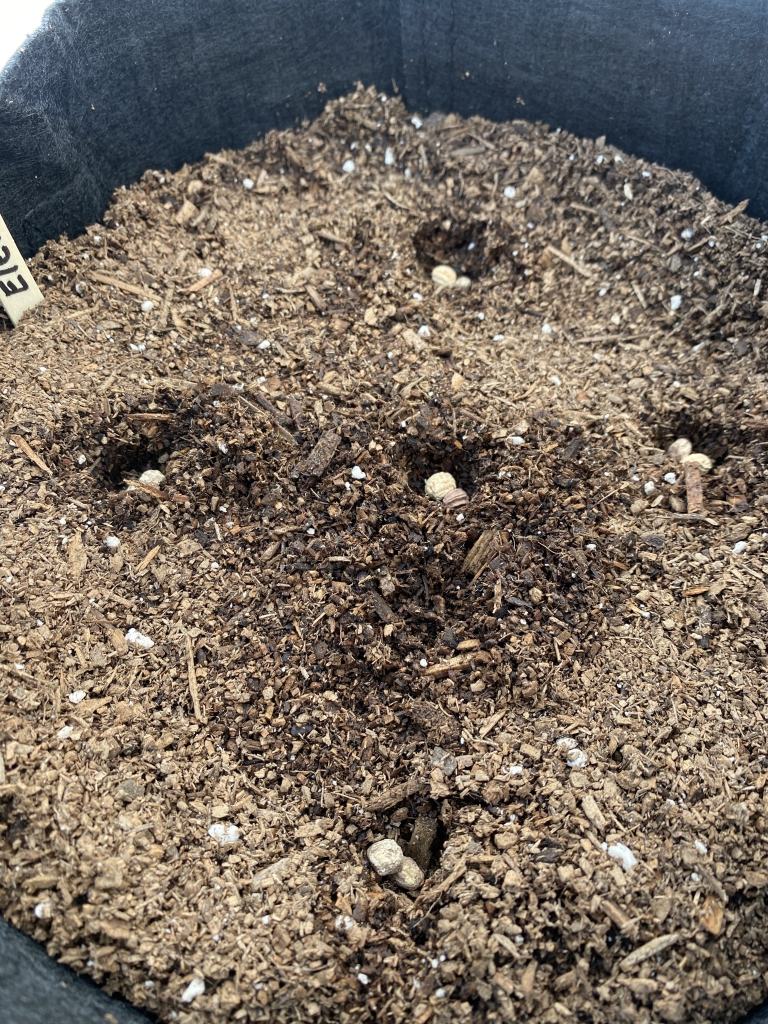
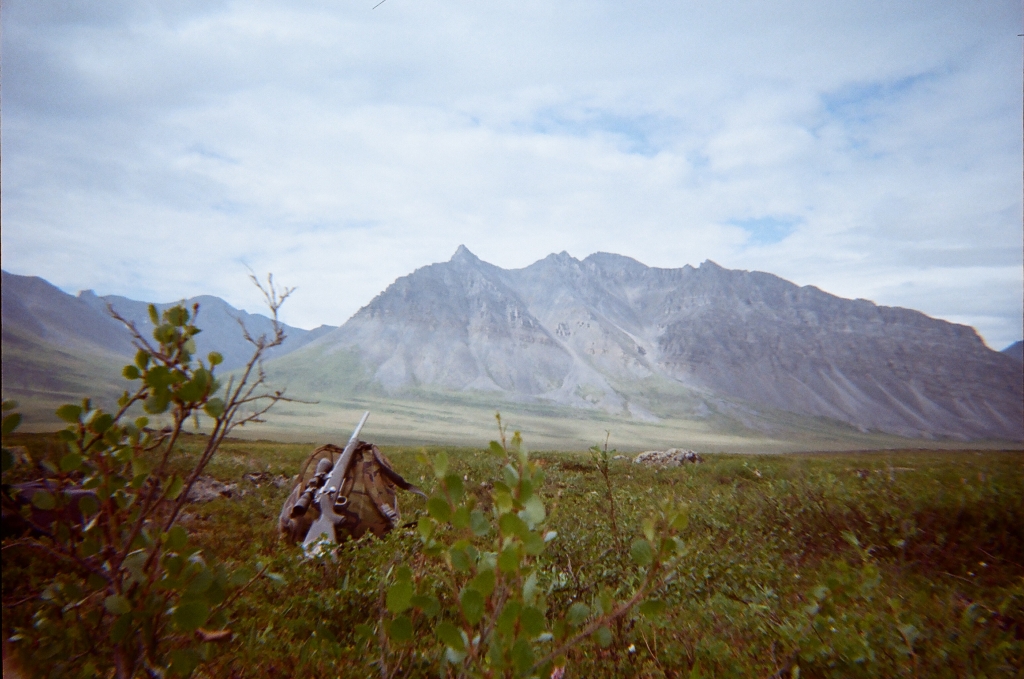
Upon returning to Los Angeles, it is challenging to summarize what I have learned and how I will bring that knowledge back to my students. Our school is surrounded by weaving highways rather than tributaries, and palm trees line our streets the way the willows of Anaktuvuk line the river. On a surface level, I have ideas for activities and lessons connected to caribou, hiġłuat, food traditions, arctic plants, and accessible gardening across many biomes. On a deeper level, I am looking forward to inviting my students to consider how we can weave human factors into the STEM research we conduct in our garden classroom, and in our wider community.
In the garden classroom we start the year with a discussion of the importance of root systems to the foods we harvest. Anaktuvuk Pass is in a polar (literally) opposite biome and 2,698 miles from our school in Inglewood, California. Yet, in both communities, understanding the roots that connect food and humans to the land, and investing in co-creation and CBPR are essential to promoting food sovereignty and developing community-centered solutions that engage the next generation.
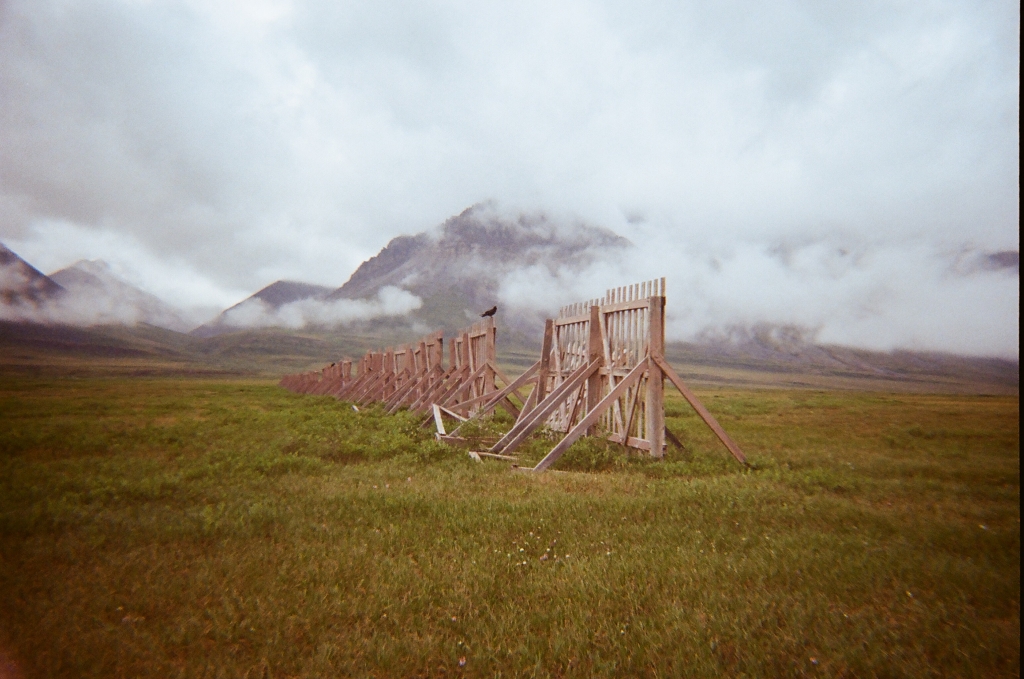
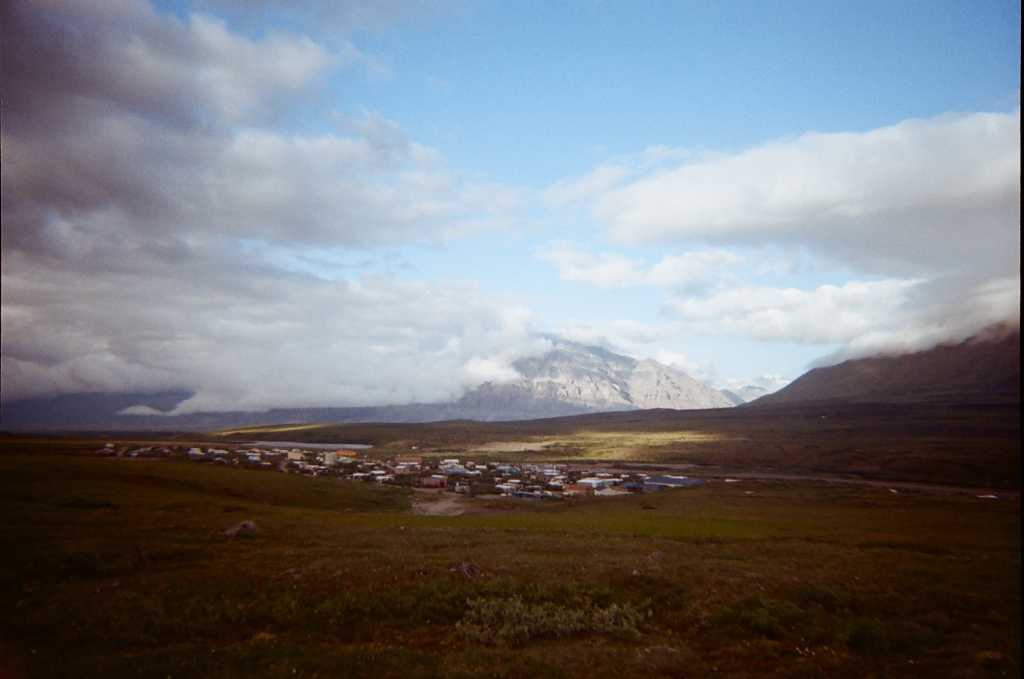
Works Cited
[1] NSB Assembly. (2016, September 13). Anaktuvuk Pass 2016 – 2036 Comprehensive Plan. https://www.north-slope.org/wp-content/uploads/2022/02/AKP_Comp_Plan_Adopted_-_Reduced_Size.pdf
[2] Saito, K., Kugo, Y., Koskey, M., Iwahana, G., Hirasawa, Y., Tatsuzawa, S., Zhegusov, Y., Jambaljav, Y., Arevgaq John, T. (2024, September). Food life history and cold storage in Greater Beringia. Part I: Preliminary interdisciplinary investigation. Polar Science, 41. https://doi.org/10.1016/j.polar.2024.101092
[3] Hassol, Susan Joy. Alaska Climate Impact Assessment. Impacts of a Warming Arctic. University of Alaska, Fairbanks, 2004. www.amap.no/documents/download/1058.
[4] Campbell, J. (1998). North Alaska Chronicle: Notes from the End of Time: the Simon Paneak Drawings: Museum of New Mexico Press, Santa Fe. Google Scholar.
[5] Hopson, N. Gardens in the Arctic . https://gardensinthearctic.com/
